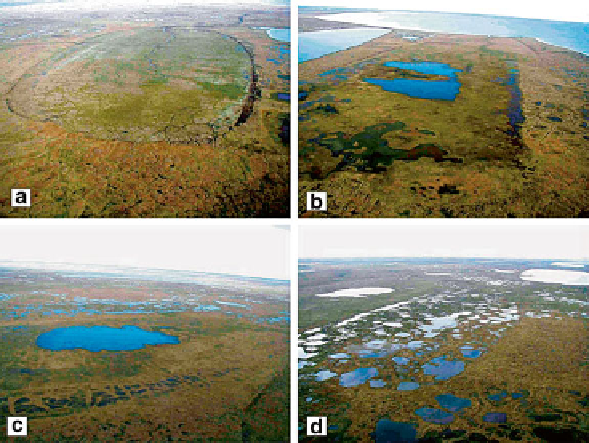Geoscience Reference
In-Depth Information
11.5
Cryosols and Reconstruction of Past Environments
Cryosols have played an invaluable role in reconstructing past environments. A few
examples will be given from the author's experience. Thaw lakes occur extensively
in the coastal plain of the Eurasian and North American Arctic. About 20 % of the
Arctic Coastal Plain of Alaska contains thaw lakes and another 50 % features drained
thaw-lake basins (DTLBs) (Hinkel et al.
2003
; Bockheim et al.
2004
). The lakes
and basins are elliptical with the long axis oriented a few degrees west of north and
nearly perpendicular to the prevailing summer wind direction. It has long been
known that these lakes undergo a natural cycle. They established a developmental
sequence of DTLBs that included surface organic thickness, ice content of the upper-
most permafrost, decomposition stage of organic matter, frost polygon form, great
soil group, and vegetational parameters. The lowermost organic matter on the surface
of the DTLBs was radiocarbon dated. Examples of the four age classes of DTLBs
are shown in Fig.
11.8
. The study validated that the thaw lake cycle occurs in
response to climatic cooling and has been operating on the Barrow Peninsula for at
least 5,500 year.
Many soils in the arctic contain high amounts of soil organic C in the transition
layer, refl ecting warmer periods when the thaw depth was deeper (Bockheim and
Hinkel
2007
). They showed that an average of 51.6 kg C m
−3
was present in the
Fig. 11.8
Oblique photos of a chronosequence of drained thaw-lake basins near Barrow, Alaska:
(
a
) <50 year, (
b
) 50-300 year, (
c
) 300-2,000 year, (
d
) 2,000-5,500 year (Hinkel et al.
2003
)

